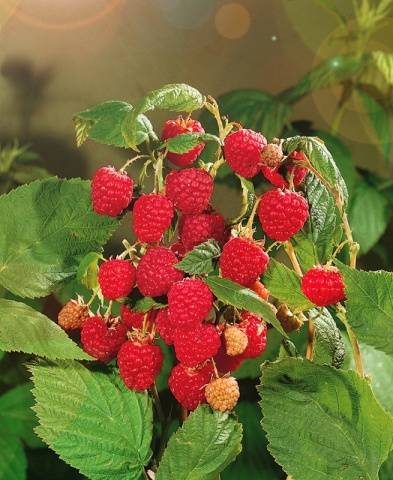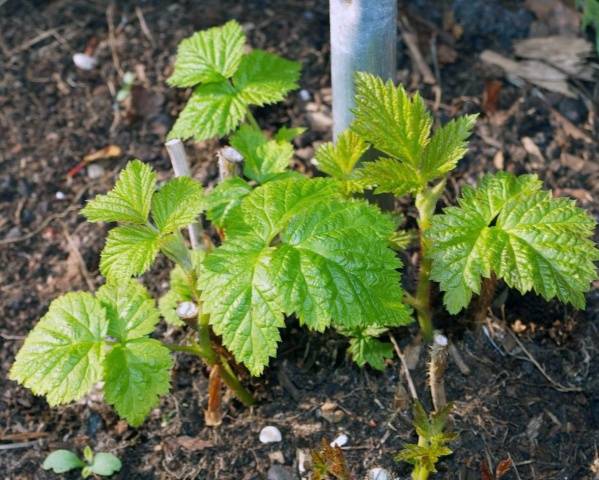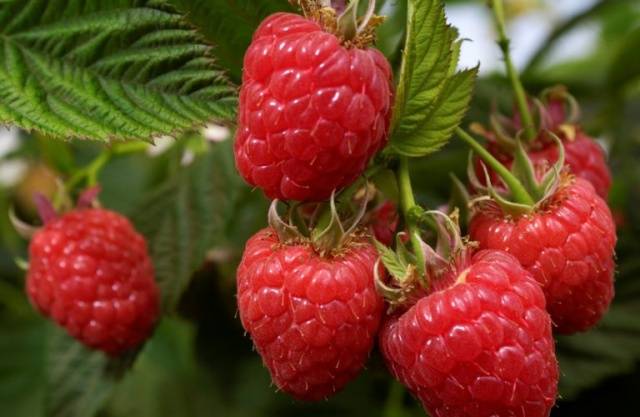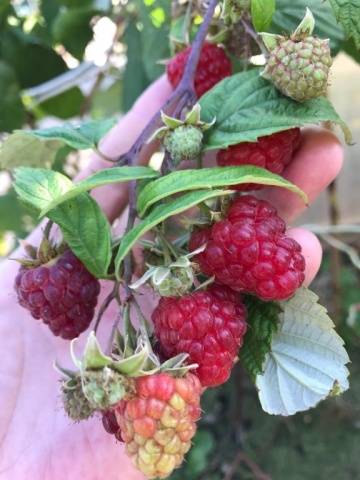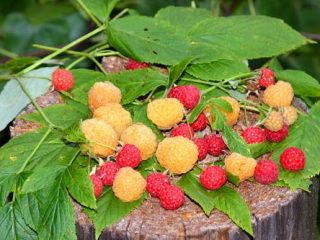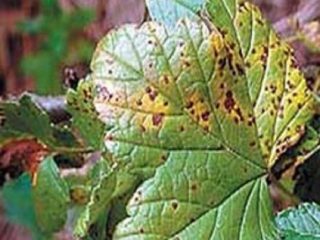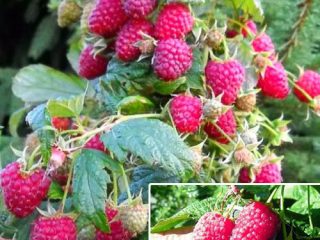Content
Raspberry Zhuravlik is a little-known remontant variety bred by Russian breeders. It is characterized by high yield, long fruiting and good taste of berries. High immunity to diseases and average winter hardiness make it possible to grow the Zhuravlik variety throughout Russia. Below is a description of the Zhuravlik raspberry variety, photos and reviews.
Botanical description
The Zhuravlik variety was included in the state register in 2001 and is recommended for cultivation in the Volga region and the North Caucasus. When planting in other regions, the winter hardiness of the variety and the need for additional shelter are taken into account.
Description of the variety and photo of Zhuravlik raspberry:
- earlier maturation;
- remontant variety;
- powerful bush;
- erect or slightly spreading shoots;
- height 1.7-2 m;
- annual shoots are purple in color and have a slight waxy coating;
- two-year-old branches are light brown;
- the presence of thorns at the base of the shoots;
- large green leaves.
Description of berries of the Zhuravlik variety:
- Red color;
- slight pubescence;
- blunt-conical shape;
- tender pulp;
- weight 2 g;
- sweet and sour taste;
- taste rating – 4.7 points.
Up to 2 kg of berries are harvested from one raspberry bush of the Zhuravlik variety. Fruiting is extended and ends with the onset of frost.
The berries have a wide range of uses. They are frozen, consumed fresh, and used to prepare vitamin cocktails, desserts, preserves, compotes, and jams.
Planting raspberries
Remontant raspberries bring a high yield when choosing a suitable place for planting. Plants are provided with natural light, the soil is fertilized with minerals or organic matter. Seedlings of the Zhuravlik variety are purchased from nurseries or obtained from the original bush.
Preparing the site
The remontant raspberry Zhuravlik actively develops in illuminated areas. In the shade, the yield and taste of berries are lost. Therefore, raspberries are planted away from buildings, fruit trees and shrubs.
Raspberry beds are arranged on a hill or a slight slope. In lowlands with high humidity and slow air warming, it is better not to plant the crop.
The soil for raspberries is prepared in advance. River sand is added to heavy clay soil. In order for sandstones to better retain moisture, they are fertilized with humus and peat. Acidic soils are limed.
Before growing raspberries, it is recommended to plant green manure on the plot: lupine, mustard, legumes. When flowering begins, the plants are dug up and embedded in the soil to a depth of 30 cm.
Raspberry propagation
For planting, healthy Zhuravlik raspberry seedlings are used. The optimal plant height is 25 cm, shoot diameter is from 5 mm. Seedlings should not have growths on the roots, dark spots or signs of damage.
If you have a full-fledged Zhuravlik raspberry bush, planting material is obtained in the following ways:
- Root suckers. Remontant raspberries produce few root shoots, which can be used to propagate the variety. The largest number of shoots are formed in bushes of the Zhuravlik variety older than 4 years. In the spring, the plants are dug up and transplanted into a separate bed. When the raspberries take root, they are moved to a permanent place.
- Cuttings. In the fall, you need to dig up a small root of the Zhuravlik raspberry and divide it into cuttings 10 cm long. The resulting material is planted in a garden bed and watered abundantly. In the spring, seedlings will appear, which are regularly cared for. At the end of the season, the raspberries are transplanted into the garden.
- Dividing the bush. At raspberry transplant Crane new plants can be obtained by dividing the bush. The rhizome is dug up and divided into parts with a knife. The sections are sprinkled with wood ash.
Work order
Planting work is left until the fall, when the leaf fall ends. It is possible to plant Crane raspberries in the spring, then you need to wait until the snow melts and stable warm weather.
Sequence of planting work:
- First, dig a hole with a diameter of 50 cm and a depth of 60 cm. When planting several plants, it is better to dig a trench. Leave 1-1.5 m between bushes.
- Add 2 buckets of compost and 250 g of complex fertilizer containing phosphorus and potassium to the fertile soil.
- The hole is covered with earth and left for 3-4 weeks.
- When the soil settles, begin planting raspberries. A day before work, the roots of the plant are dipped in a solution of a root formation stimulator.
- The plant is planted in the garden. The roots of the seedling are covered with earth, which is carefully compacted.
- The bushes are watered with warm water.
Raspberry Crane takes root well after planting. Plants are watered weekly and the soil is mulched with humus.
Variety care
Remontant raspberries require special care to ensure long-term fruiting. The bushes are watered and fed with minerals and organic matter. In autumn, the shoots are pruned to get a good harvest for the next year.
Watering
The intensity of watering of remontant Zhuravlik raspberries depends on weather conditions. On average, raspberries are watered every week. In dry weather, moisture is added twice a week. The soil should remain slightly moist at all times.
Watering is especially important at certain stages of raspberry development:
- before flowering begins;
- during the formation of ovaries;
- during the formation of berries.
For irrigation, warm water is used, which has been warmed and settled in barrels. Exposure to cold water is a real stress for plants. It is important not to allow moisture to stagnate in the soil.
After watering, loosen the soil to improve its breathability. To reduce the number of waterings, add a layer of humus or straw 5 cm thick.
Top dressing
Regular feeding has a positive effect on the fruiting of Zhuravlik raspberries. For processing, both natural products and mineral fertilizers are used.
Feeding scheme for Zhuravlik raspberries:
- in early spring when buds open;
- 2 weeks before the formation of inflorescences;
- during the flowering period;
- at the beginning of fruiting;
- in the fall after harvest.
For spring feeding use nitrogen fertilizers. Among organic substances for raspberries, a solution of mullein diluted with water 1:15 is suitable. For 1 sq. m of raspberry garden requires 2 buckets of solution.
An alternative feeding option is ammonium nitrate. 30 g of fertilizer is dissolved in water before watering the raspberries. The substance can be incorporated into the soil when digging up the site in the spring.
In the future, they switch to feeding raspberries with potassium and phosphorus.Nitrogen fertilizers have a positive effect on the development of shoots and leaves, which reduces the yield of bushes.
For feeding, use 40 g of superphosphate (to stimulate the root system) and 25 g of potassium sulfate (to improve the taste of the berries). The substances are dissolved in water, after which the bushes are watered.
In the fall, wood ash helps replenish the supply of nutrients in the soil. Fertilizer is incorporated into the soil after harvesting.
Bush pruning
For remontant raspberries, they practice pruning shoots at the root. Bushes are pruned in the fall to encourage the development of new shoots the following spring. The procedure reduces the risk of disease development and the spread of pests. Fungal spores and insect larvae often overwinter on raspberry shoots.
If you avoid pruning, you can harvest Zhuravlik raspberries from one- and two-year-old shoots. Old branches are cut at the root. Frozen, dry and broken shoots must be eliminated.
Protection from diseases and pests
Zhuravlik raspberries are characterized by resistance to major crop diseases. If agricultural practices are followed, plants rarely get sick.
To protect against diseases, Zhuravlik raspberries are sprayed with solutions of Topaz, Fundazol or Oksikhom. Treatment is carried out in the spring before the beginning of the growing season and in late autumn.
The risk of the spread of fungal diseases increases with excess humidity, so raspberry fields are regularly weeded and the bushes are tied to supports.
Using high-quality material will help protect raspberries from viral diseases. Garden tools should be disinfected before and after use.
Raspberries are susceptible to attack by beetles, spider mites, aphids and caterpillars. Raspberries are treated against insects before flowering with solutions of Karbofos or Actellik. During the growing season, it is better to spray the plantings with an infusion of dandelions or wood ash. To repel pests, an infusion of garlic or onion peels is also used.
Reviews from gardeners
Conclusion
Raspberry Zhuravlik is a worthy variety that can provide the gardener with berries before the autumn cold snap. Caring for plants comes down to watering and fertilizing.Regular pruning stimulates fruiting. Special products help protect plantings from diseases and pests.
